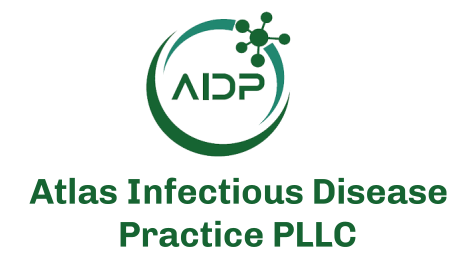Disclaimer: Early release articles are not considered as final versions. Any changes will be reflected in the online version in the month the article is officially released.
Author affiliation: Imperial College London, London, UK (O. Konstantynovska); Kharkiv Regional Phthisiopulmonological Center, Kharkiv, Ukraine (O. Konstantynovska, T. Synenko, A. Honcharenko, O. Volobuieva); V.N. Karazin Kharkiv National University, Kharkiv (O. Konstantynovska, O. Volobuieva, T. Liadova); Leibniz Lung Center, Borstel, Germany (M. Reimann, C. Lange, D. Chesov); German Center for Infection Research (DZIF), Hamburg-Lübeck-Borstel-Riems, Germany (M. Reimann, C. Lange, D. Chesov); University of Lübeck, Lübeck, Germany (C. Lange); Baylor College of Medicine and Texas Children’s Hospital, Global Tuberculosis Program, Houston, Texas, USA (C. Lange); Nicolae Testemitanu State University of Medicine and Pharmacy, Chisinau, Moldova (D. Chesov)
In 2024, the World Health Organization (WHO) officially recognized rifampin-resistant Mycobacterium tuberculosis as 1 of 4 antibiotic drug–resistant pathogens of critical global priority (1). According to WHO’s 2024 Global TB report, 400,000 persons worldwide develop tuberculosis (TB) caused by a multidrug-resistant/rifampin-resistant (MDR/RR) M. tuberculosis (2). Of note, the estimated proportion of MDR/RR TB among all new TB cases is 3.2%, whereas among previously treated cases, that figure was 16% (2). Regional disparities in the global burden of MDR/RR TB are profound. The greatest incidence is observed in Eastern Europe and Central Asia, where up to 20% of new TB cases and >50% of previously treated cases exhibit MDR/RR TB. Those regions face considerable challenges in implementing effective TB control measures (2).
WHO’s 2024 recommendations for drug-resistant TB management included several short treatment regimens, which have shown high efficacy in curing MDR/RR TB. Treatment durations are 6–9 months, which are substantially shorter than the standard 18–20-month regimen (3). Eligibility for shorter regimens requires confirmation of drug susceptibility within the regimen. In cases where resistance to agents used in 6- and 9-month regimens is confirmed or suspected, patients must undergo the longer 18-month course. However, emerging resistance to key second-line TB treatment agents in multiple regions threatens the real-world effectiveness of those treatment approaches (4).
The objective of this study was to assess resistance rates to second-line TB treatment drugs in the Kharkiv region of Ukraine (2.6 million inhabitants in 2023), which is a country with a high burden of drug-resistant TB, and to compare those findings with our previously reported data from the same region (5). We analyzed data from phenotypic drug susceptibility testing, as recorded in the Electronic Register of the TB-Control Program in Kharkiv, for the specified period. Results indicated that 23.1%–31.2% of patients in Kharkiv affected by MDR/RR TB during 2019–2023 had additional resistance to levofloxacin at ≈3-fold greater level than the 10% observed in 2014. Similarly, resistance to moxifloxacin ranged from 10.6% to 20.9% and was the highest rate recorded in the past 2 years, suggesting a notable upward trend in fluoroquinolone resistance (Table). Conversely, resistance to other group A agents (bedaquiline and linezolid) and group B agents (clofazimine and cycloserine) remained low at <1%. We observed high levels of resistance for pyrazinamide (a drug belonging to group C on the WHO drug list), which is a component medicine in the 2024 WHO-recommended 9-month MDR TB regimens. Resistance to pyrazinamide ranged from 54.3% to 58.7% during 2019–2023, compared with 69.6% in 2014.
The substantial increase in fluoroquinolone resistance observed in this study is particularly alarming. Fluoroquinolones play a critical role in MDR/RR TB treatment. Resistance to those agents is a key criterion for defining pre–extensively drug-resistant TB. That resistance is also a noteworthy factor linked to poorer outcomes in patients with MDR/RR TB (6). Consequently, because up to 30% of patients in Kharkiv with MDR/RR TB are infected with M. tuberculosis strains exhibiting fluoroquinolone resistance, effective TB control faces considerable challenges at times of military oppression. A contributing factor to the rise in fluoroquinolone resistance is likely the insufficient availability or improper use of second-line TB medications (7). Our 2014 data indicated deficiencies in MDR/RR TB management at the Kharkiv TB Dispensary, suggesting that the high rates of fluoroquinolone resistance observed during 2019–2023 could be a consequence of suboptimal possibilities for the management of patients with drug-resistant TB in previous years.
In addition to their role in MDR/RR TB treatment, fluoroquinolones are frequently prescribed empirically for common bacterial infections, such as pneumonia and sinusitis. In cases where fluoroquinolones are used as monotherapy for patients with undiagnosed TB, that practice may contribute to bacillary resistance across that drug class (8). The resulting symptom relief can delay TB diagnosis, thereby increasing community transmission risk (9). In Ukraine, the unregulated use of antibiotic drugs is common practice (10), adding to the increase in M. tuberculosis resistance to fluoroquinolones. The rapid development of resistance observed here should serve as a cautionary example as new MDR/RR TB drugs, such as bedaquiline, are introduced into clinical settings. Rapid resistance development poses a potential threat to the efficacy of newly implemented TB treatment drugs such as bedaquiline, even if data from this study do not yet reflect such resistance.
In conclusion, given the ongoing military conflict in the region, heightened vigilance regarding the potential for worsening drug resistance among patients with MDR TB in Kharkiv is essential. Additional efforts to mitigate factors that may contribute to rising resistance should be prioritized to prevent further escalation of the public health threat.
Dr. Konstantynovska is an associate professor at the Department of Infectious Diseases and Clinical Immunology of V.N. Karazin Kharkiv National University’s Medical School in Ukraine. Her research and clinical interests focus on molecular genetics, tuberculosis, pulmonology, genetic factors in drug resistance against antimycobacterial agents, and infections caused by nontuberculous mycobacteria.






